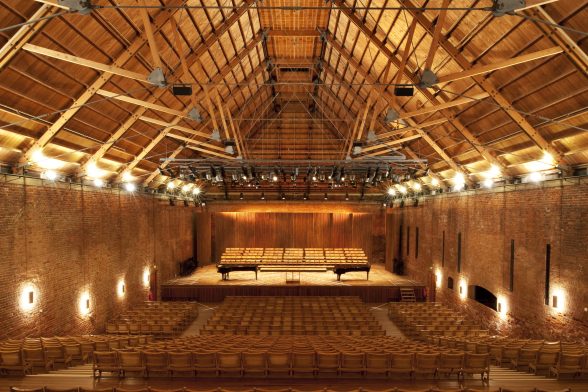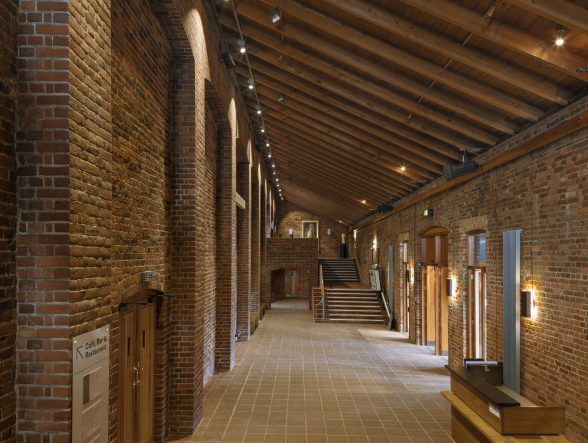This website uses cookies
This website uses cookies to enable it to function properly and to analyse how the website is used. Please click 'Close' to accept and continue using the website.



Image: Historic England
On the advice of C20 Society and Historic England, two significant Twentieth Century buildings at Snape Maltings have recently been listed. The review of Snape Maltings’ historic buildings was requested by East Suffolk Council, to clarify the level and extent of its special architectural and historic interest and to help inform the future management of this remarkable site.
The world-famous Snape Maltings Concert Hall, home of the Aldeburgh Festival, has been upgraded to a Grade II* listing, while the Britten and Pears building has been newly Grade II listed.
The Snape Maltings was a centre for brewing from 1841 until 1965. At its peak it was sending 17,000 quarts of barley a year to London and Newcastle brewers, but the business suffered a steep decline after the Second World War and the extensive site was put up for sale in mid-1960’s. The large brick warehouses and malthouses lent themselves to being repurposed, with the manager of the Aldeburgh Festival acquiring the former Malthouse for conversion into a concert hall and recording studio.
The Concert Hall opened in June 1967, since then the site has been gradually developed into one of the world’s leading centres of music and one of Suffolk’s most popular visitor destinations, owned and run by the pioneering music, arts and heritage charity, Britten Pears Arts.

Image: Historic England
Snape Maltings Concert Hall – Grade II* listed
Founded in 1948, The Aldeburgh Festival used a variety of venues until its growing popularity required a move to a larger, more permanent home.
Stephen Reiss, the manager of the Aldeburgh Festival, identified an opportunity to convert the largest of the former Snape malthouses into a concert hall and recording studio. He approached Ove Arup and Partners (Arup is considered to be amongst the foremost architectural structural engineers of his time, famed for his work on the Sydney Opera House) to carry out a survey.
Festival founder Benjamin Britten, a central figure of 20th century British music, had lived in a converted windmill at Snape prior to the Second World War. The experience of adapting a building to his own needs gave him an understanding of the architectural process as well as a keen sense of space.
The malthouse conversion, designed by Derek Sugden of Arup Associates, was carried out during 1966 and 1967. The initial brief was for a concert hall to seat an audience of between 700 and 800. It was to have lighting facilities suitable for opera, an orchestra pit and a removable proscenium (the frame or arch separating the stage from the auditorium). To keep the atmosphere of an industrial building, finishing was kept to a minimum.
The concert hall was to be wired for the BBC for recording during the Festival and for the Decca Record Company for recording the rest of the year. Decca contributed to the cost of building the auditorium, and in return demanded an exceptional sound quality. Sugden, a music lover, taught himself acoustics and volunteered to also undertake the audio work. The auditorium is considered to be one of the finest in the world. Only the Southbank Centre’s Queen Elizabeth Hall is similarly influenced.
Snape Concert Hall was opened by Her Majesty The Queen in 1967. Sadly, just two years later in 1969, following the opening night of the festival, a fire reduced the venue to an open shell, but with the help of a fundraising appeal, it was restored and reopened in 1970.

Image: Historic England
The Britten Pears Building – Grade II listed
In 1976 (to commemorate the death of Benjamin Britten that year) a former mid-19th century barley germination building and store, next to the concert hall, was converted by Arup Associates into spaces for young singers or string players. Completed in 1979, it was named the Britten Pears Building and houses the School for Advanced Musical Studies.
Refurbishment works added a new artists’ café with an external terrace. It also includes the Peter Pears Recital Room.

Become a C20 member today and help save our modern design heritage.